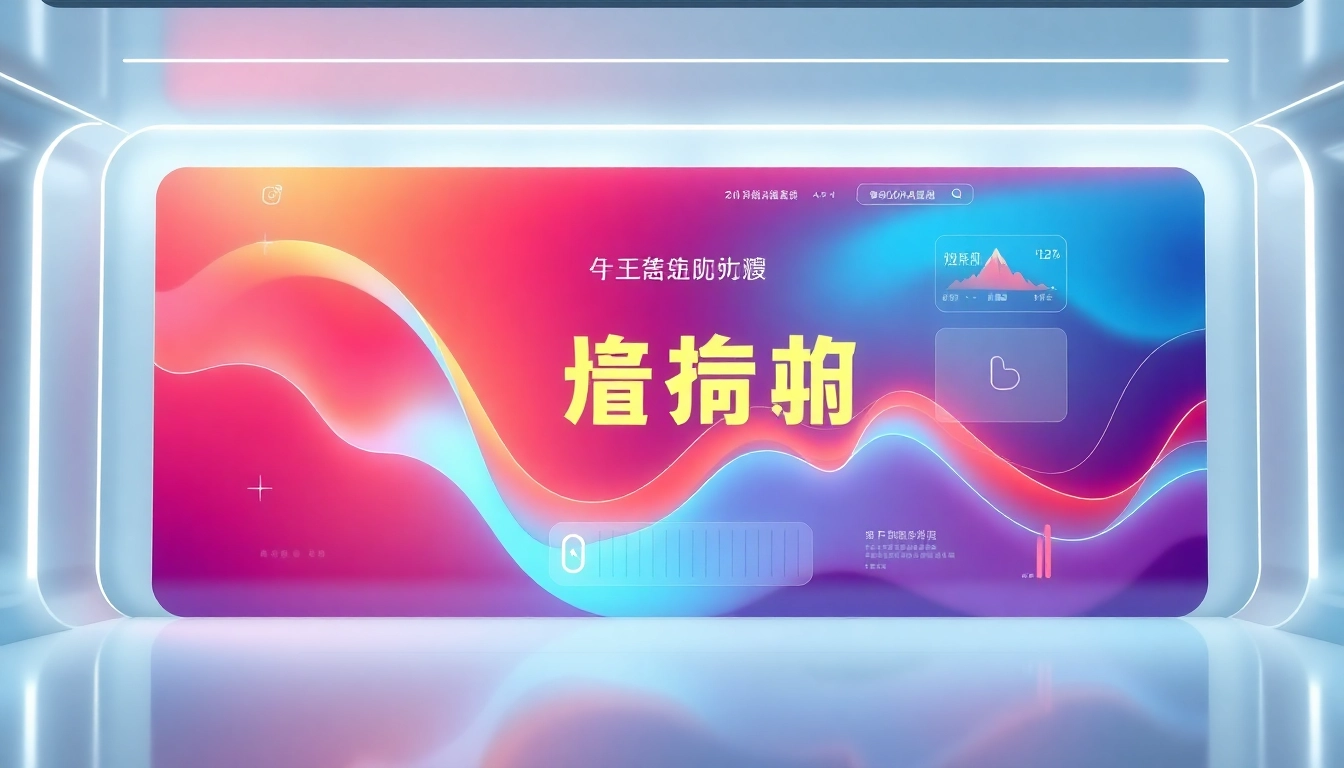What is Managed IT Support?
Definition and Overview
Managed IT support refers to the practice where businesses outsource their IT operations to an external provider that specializes in handling various technology-related tasks. This can include everything from network management and data backup to cybersecurity and system monitoring. The core philosophy behind managed IT support is to enhance efficiency, reliability, and security for organizations, allowing them to concentrate on their primary business activities.
Unlike traditional IT outsourcing, which often focuses on specific projects or tasks, managed IT support is an ongoing partnership. It typically involves a subscription-based model where a company pays a regular fee for a suite of services. Businesses of all sizes recognize the value of maintaining a proactive approach to their IT infrastructure, hence the increasing demand for managed IT support in today’s digital landscape, particularly emphasized in the domain of managed it support.
Core Components of Managed IT Support
The essential components of managed IT support revolve around several key areas, each designed to create a comprehensive IT solution that meets the specific needs of the client. These components include:
- Remote Monitoring and Management (RMM): Continuous monitoring of systems to ensure optimal performance and early detection of issues.
- Helpdesk Support: Accessible technical assistance available to resolve user issues quickly.
- Data Backup and Recovery: Regular backups of essential data with established protocols in place for disaster recovery.
- Cybersecurity: Comprehensive security measures, including firewalls, antivirus measures, and security audits to protect company data.
- Network Management: Oversight of network infrastructure to ensure reliability, speed, and uptime.
Difference Between In-House and Managed IT Support
Understanding the distinction between in-house IT support and managed IT support is crucial for businesses considering which model best suits their operational needs. In-house IT refers to having a dedicated team of IT professionals employed directly by the organization. This setup allows for deep knowledge of the company’s specific environment and needs but can be cost-prohibitive for smaller firms.
Conversely, managed IT support provides businesses with access to a team of experts without the overhead associated with maintaining a full-time staff. This model not only reduces costs but also grants access to a broader range of technologies and expertise that might be otherwise unavailable. Organizations can benefit from scalability, as managed IT support providers can easily adapt to changing business needs and technological advancements.
Benefits of Managed IT Support
Cost Efficiency and Budget Control
The financial implications of implementing managed IT support are significant. Many businesses discover that outsourcing their IT needs is more cost-effective than maintaining an in-house team. With managed IT support, companies can expect predictable monthly costs associated with IT services.
This model enables organizations to allocate their budget more effectively by reducing unexpected expenditures associated with IT emergencies or the upkeep of outdated technology. Through economies of scale, managed IT support companies can provide advanced services at a fraction of the cost of hiring in-house staff, thus allowing more efficient control over the IT budget.
Access to Expertise and Technology
Another considerable advantage of managed IT support is the access to a wealth of expertise and state-of-the-art technologies. Managed service providers employ specialists in various fields, ensuring that organizations benefit from a diverse skill set without needing to recruit multiple individuals in-house.
Additionally, technology constantly evolves, and keeping up-to-date with the latest advancements can be a challenge for a small in-house team. Managed IT support providers invest in their staff’s ongoing education and resources to stay current with the latest trends and innovations, including cloud computing, AI integration, and advanced security techniques.
Enhanced Security and Compliance
As cyber threats continue to rise, enhancing security is a critical concern for businesses. Managed IT support comes equipped with robust cybersecurity measures tailored to protect sensitive data and ensure regulatory compliance. Providers typically implement multiple layers of security, such as intrusion detection systems, data encryption, and comprehensive monitoring.
Moreover, many industries have strict compliance requirements. A knowledgeable managed IT support provider can guide organizations through the complexities of compliance, ensuring that their systems and data practices adhere to relevant regulations, thereby minimizing the risk of legal complications.
Choosing the Right Managed IT Support Provider
Assessing Business Needs
Before selecting a managed IT support provider, businesses must first assess their unique IT requirements and challenges. This involves identifying critical areas such as network infrastructure, data storage, and current security measures. By understanding their specific needs, organizations can find a provider that offers the services most aligned with their objectives.
Additionally, consideration should be given to the company’s size, industry, and future growth plans, ensuring that the selected managed IT support provider can scale services per their evolving needs.
Evaluating Provider Capabilities
Once business needs are clearly defined, the next step is to evaluate potential managed IT support providers. This evaluation should include:
- Experience and Reputation: Researching client testimonials and industry recognitions that can provide insight into a provider’s capabilities.
- Service Offerings: Ensuring the provider can offer a comprehensive range of services tailored to meet the organization’s needs.
- Response Times: Understanding the provider’s commitment to service level agreements (SLAs) can help gauge how quickly they respond to unforeseen issues.
Understanding Service Level Agreements (SLAs)
Service level agreements (SLAs) are pivotal in the partnership between a business and its managed IT support provider. SLAs outline the expected service standards, including response times, service availability, and performance metrics. Clear and concise SLAs help establish accountability and ensure both parties understand their responsibilities within the engagement.
Furthermore, understanding the terms related to data security, compliance, and exit strategies is critical for any business engaged in the managed IT support model. This awareness safeguards companies against service inconsistencies that could disrupt their operations.
Common Challenges in Implementing Managed IT Support
Overcoming Resistance to Change
Transitioning to managed IT support often meets resistance from employees accustomed to traditional IT departments. To facilitate a smooth transition, clear communication regarding the benefits and changes is essential. Regular training sessions and open forums for discussion can alleviate concerns and build a culture that embraces change.
Highlighting success stories where managed IT support has led to improved outcomes can also support the transition, demonstrating the tangible benefits of this operational model.
Ensuring Effective Communication
Successful collaboration between an organization and its managed IT support provider hinges on effective communication. Establishing clear lines of communication and regular check-ins can help prevent misunderstandings and ensure that the managed services meet the organization’s expectations.
Utilizing collaborative tools and platforms for project management can also enhance the transparency of operations and keep everyone aligned on goals and responsibilities.
Managing Vendor Relationships
Maintaining a positive relationship with a managed IT support provider is crucial for ongoing success. Organizations should treat their provider as a partner rather than just a vendor. Regular feedback and constructive dialogue can help address potential issues swiftly and foster a collaborative atmosphere.
Additionally, setting mutual goals and sharing performance metrics empowers both parties to work together towards common objectives, ensuring the best possible outcomes for the business.
Future Trends in Managed IT Support
Impact of AI and Automation
Artificial Intelligence (AI) and automation are poised to revolutionize the managed IT support landscape. Providers are increasingly leveraging AI-driven tools for system monitoring, threat detection, and predictive analytics, enhancing their ability to respond to incidents swiftly and proactively monitor systems for potential issues.
Automation of routine IT tasks reduces workloads for IT professionals, allowing them to focus on higher-value initiatives and strategic projects that drive innovation within the organization.
Integration of Hybrid Solutions
As businesses increasingly adopt cloud technology, the integration of hybrid solutions that combine on-premises and cloud services is becoming standard. Managed IT support providers are adapting by offering services that seamlessly integrate various platforms, ensuring that businesses can efficiently leverage their existing infrastructure while also taking advantage of cloud benefits.
This hybrid approach allows organizations to maintain control over sensitive data while benefiting from cloud scalability and flexibility.
Expanding Security Focus
As cyber threats continue to evolve, the focus on security within managed IT support will only expand. Future providers must offer advanced cybersecurity solutions that incorporate AI for threat detection and response.
Additionally, as regulations around data privacy become stricter, managed IT support providers will need to be well-equipped to assist organizations in navigating compliance while also mitigating risks associated with data breaches.



